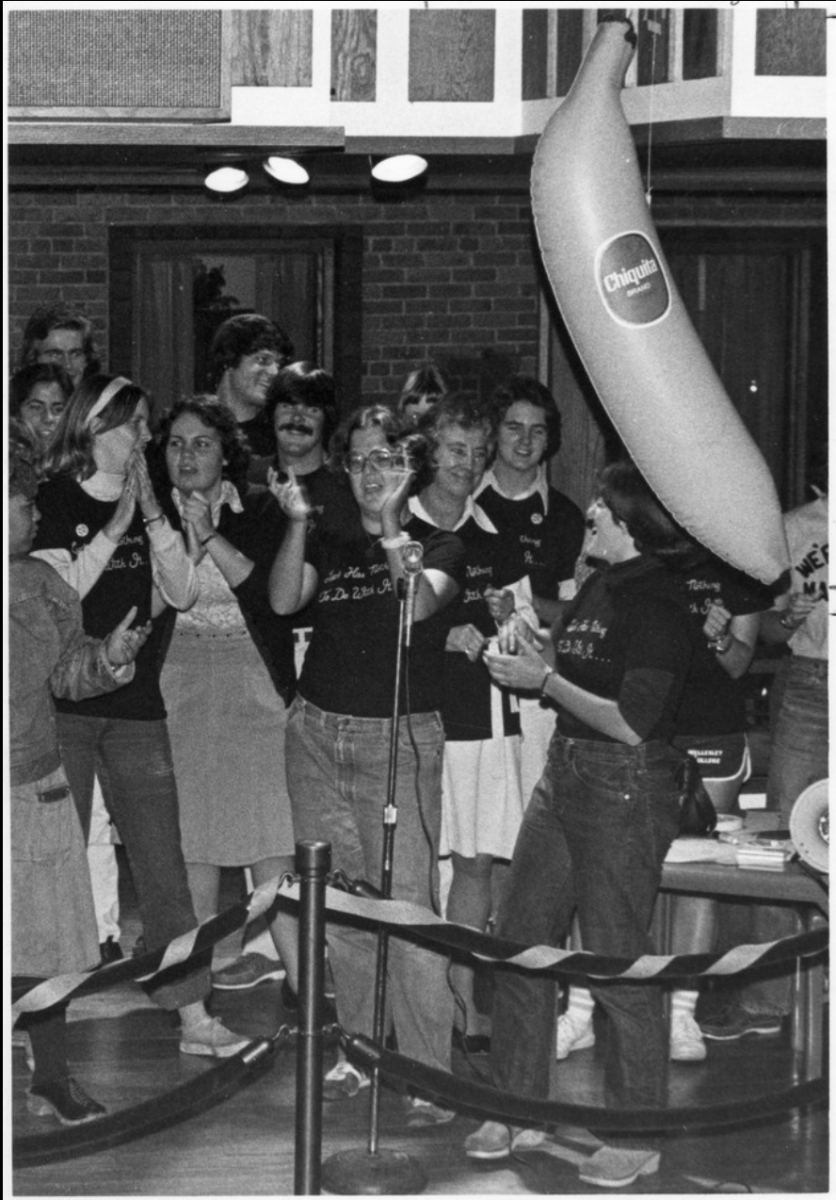What other place on campus could offer the deal of a grande cup of hot coffee and an emoji sugar cookie for just $3 this October? It’s the store we all know and love: the Emporium. But how much do we really know about the Emporium? Most of us associate the store with memories of rushing to Lulu to grab some last-minute party supplies or frantically searching for tissue boxes and painkillers when we’ve come down with the Wellesley plague. However, there’s much more to know about the Emporium and how it, along with the Wang Campus Center, came to be.
The Emporium received its name as a result of a gift from Victoria J. Herget ’73 in honor of former College President Diana Chapman Walsh ’66. The Emporium, along with the Wang Campus Center, opened to students in Oct. 2005, the construction of which was made possible by a record-breaking $25 million donation from Lulu Chow Wang ’66 and her husband Anthony Wang. It took several years for the innovative vision of a new Campus Center to be realized, as its planning started in spring 1999, when Walsh appointed a Campus Center Planning Committee (CCPC) to make recommendations on ways to improve “community life and active student social interaction” on campus.
According to the CCPC’s “Report of the Campus Center Planning Committee” from Jan. 2000, “The Campus Center will be a place for fun and relaxation, and also a space where students, faculty and staff can get something done: have a meeting, mail a letter, consult with a professor, purchase sundries, check email, copy a paper.” Not all of these principles have quite carried through to Lulu’s modern usage, but overall, the CCPC’s vision has rung true.
But what did students do before Lulu was around? Prior to Lulu’s construction, the main student center was called Schneider Center, which was located in the red castle-like building behind Houghton Memorial Chapel connected to Billings Hall. The Center included spaces for students to hang out or study and a dining hall. Additionally, campus-wide events, such as Film Society movie showings and theater performances on the Main Stage, were commonly hosted at the Center.
According to the March 1972 edition of the Schneider News, a publication by SBOG, students discussed several issues such as election information being provided in the Center and the removal of the “ecology box for disposal of food service plastics” due to students not disposing of items properly (what’s new?). Students and administration seemed to be open to suggestions on how to improve the center, as evidenced by the creation of a suggestion board by SBOG and a survey sent out by the College’s “Food Reps” to gauge students’ feelings about the food being served at Schneider. Students were asked about their favorite meals, their favorite cultural cuisines, their opinions about the salad bar and creative suggestions for Food Services — notable suggestions from students included formal dinners, better napkins, fresh flowers and scented candles. And what has become of these suggestions now? Maybe it’s time to return and listen to our roots.
But Schneider wasn’t without its problems. According to the CCPC’s report, when the Schneider Center’s Main Stage was used for events, the salad bar and soup station had to be moved. Only two rooms in Schneider with a maximum capacity of 50 students could be reserved for student organization meetings, which couldn’t possibly meet the needs of a college with over 170 organizations. These issues were the foundations for Wang Campus Center’s construction.
After construction was finished, Lulu’s unique architecture did not go unnoticed. In a 2005 article published by The Boston Globe, correspondent Robert Campbell remarked that Lulu’s construction was a metaphor for Wellesley’s diversity in students and landscape, apt for a historically women’s college. Its maze-like appearance truly does reflect the “purposeless but meaningful” nature of Lulu Campus Center: on any given moment, you could wander through its halls and find some students intensely studying and others enjoying a drink at Punch’s Alley, performing amazing slam poetry at Café Hoop or ravishing the cheese quesadillas from Lulu’s dining hall.
If Lulu is the only reality we are familiar with, then why bring up Schneider Center? Alumnae from pre-Lulu days often comment that Lulu seems so much colder than Schneider was, which had a cozier and more comforting feel. As I sit in Lulu writing this article, I can agree that the temperature in Lulu is often quite chilly, but alumnae should not ignore the fact that Wang Campus Center has much to offer, from unconventional hang-out spots to a convenience store like the Emporium that serves our last-minute needs, whether they be cough drops for a lingering cough or Cheez-Its for an unabating craving.






